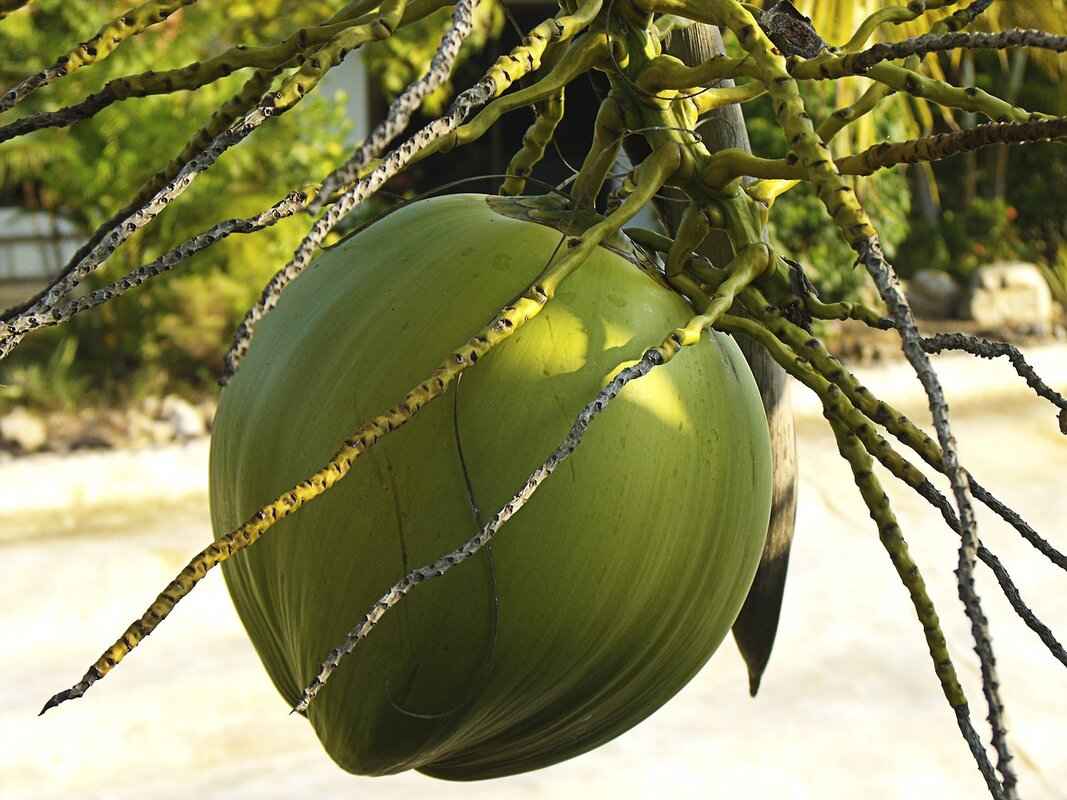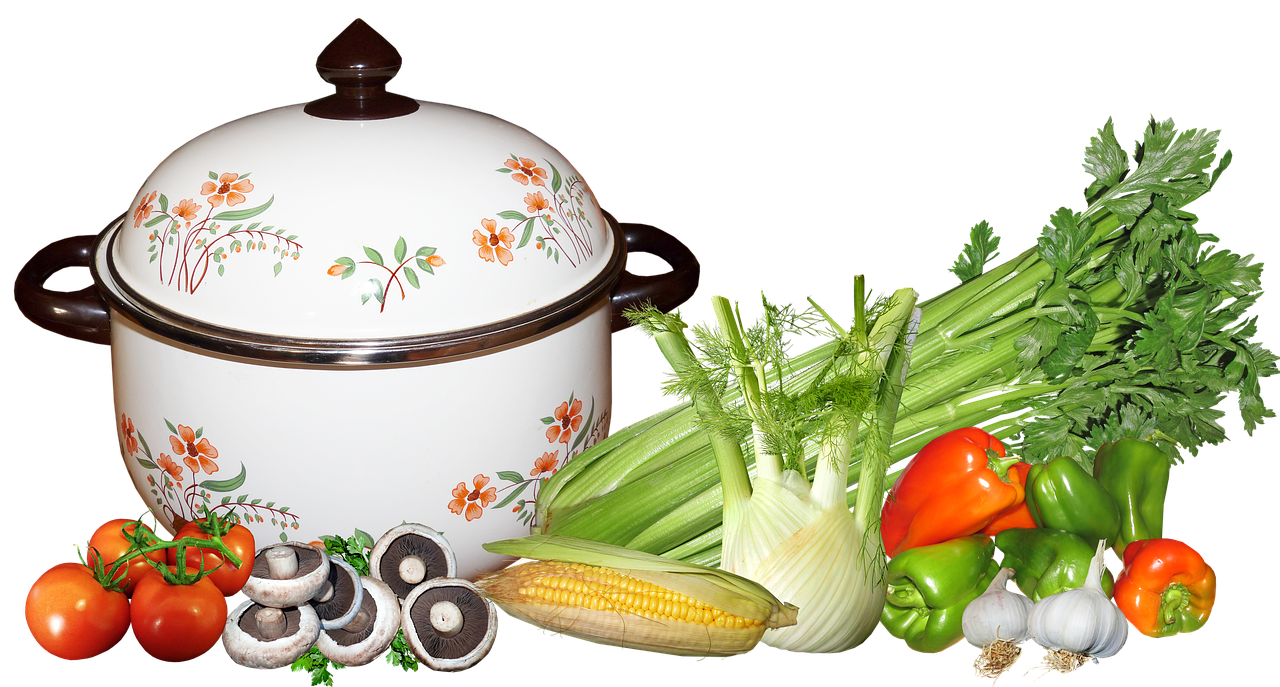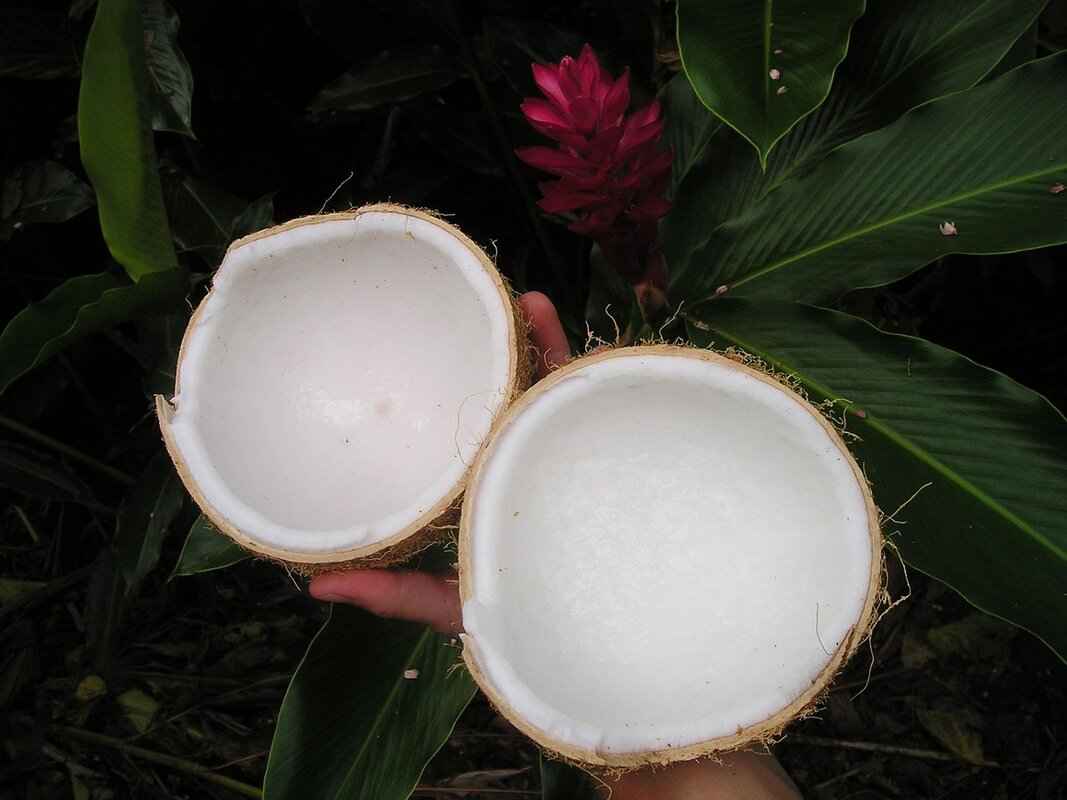Coconut is not just a staple ingredient in Filipino cuisine; it is a vital part of the cultural and culinary identity of the Philippines. This versatile fruit offers a range of unique flavors and textures that enhance various dishes, making it indispensable in everyday cooking as well as in special occasions. In this article, we will delve deeper into the significance, culinary uses, and cultural importance of coconut in the Philippines.
Coconut is utilized in several forms within Filipino cooking, including:
- Coconut Milk
- Grated Coconut
- Coconut Oil
Each of these forms contributes distinct flavors and textures to a variety of dishes, enhancing both taste and presentation.
Coconut milk is a fundamental ingredient in many beloved Filipino recipes. The process of making fresh coconut milk involves:
1. Grating the coconut meat.2. Mixing it with water.3. Squeezing the mixture to extract the milk.
This rich, creamy milk is commonly used in soups, desserts, and sauces, making it an essential component of Filipino culinary traditions.
Using fresh coconut milk is crucial as it offers superior flavor and nutritional benefits compared to canned alternatives. Fresh coconut milk is free from preservatives, making it a healthier option for cooking.
Some popular Filipino dishes that highlight the versatility of coconut milk include:
- Ginataang Bilo-bilo – A sweet dessert made with rice balls and coconut milk.
- Laing – A savory dish made with dried taro leaves cooked in coconut milk.
Coconut is packed with health benefits, making it a valuable addition to the Filipino diet. It is rich in:
- Medium-Chain Triglycerides (MCTs)
- Fiber
- Vitamins
These nutrients support heart health, digestion, and overall wellness, contributing to a balanced diet.
While coconut has numerous benefits, it is essential to consume it in moderation. Excessive intake can lead to high calorie consumption, which may pose health risks.
Coconut holds a significant place in Filipino culture, symbolizing sustenance and resilience. It is not merely an ingredient but a representation of the Filipino way of life.
Coconut is often featured prominently in local festivals, showcasing its importance in traditional dishes and cultural practices. Events such as the Coconut Festival celebrate this vital fruit, reflecting its role in community gatherings.
Often referred to as the Tree of Life, coconut trees symbolize sustenance and resilience in Filipino culture. This deep-rooted symbolism is an integral part of the national identity.
To maximize the flavor and health benefits of coconut, understanding best practices for cooking is essential. This includes:
- Storage Tips – Properly storing coconut milk, oil, and grated coconut can extend their shelf life.
- Cooking Techniques – Mastering techniques like sautéing, boiling, or baking can enhance the flavors of coconut in dishes.
Modern Filipino chefs are creatively incorporating coconut into contemporary dishes, blending traditional flavors with international ingredients. This innovation has led to exciting new recipes that appeal to a broader audience.
Fusion cuisine blends traditional Filipino elements with global flavors, and coconut plays a vital role in these innovative recipes, adding depth and richness.
With the rise of health-conscious eating trends, many chefs are crafting coconut-based recipes that are nutritious and delicious, making coconut a versatile ingredient in the modern kitchen.

What Are the Different Forms of Coconut Used in Filipino Cuisine?
Coconut is a fundamental ingredient in Filipino cuisine, celebrated for its versatility and rich flavor profile. In the Philippines, coconut is utilized in various forms, each adding a unique touch to traditional dishes. This article delves into the different forms of coconut used in Filipino cooking, highlighting their culinary significance and applications.
Coconut appears in several forms in Filipino cooking, including coconut milk, grated coconut, and coconut oil. Each of these forms contributes distinct flavors and textures, enriching a variety of dishes.
- Coconut Milk: A creamy liquid extracted from grated coconut meat, coconut milk is a staple in many Filipino dishes. It adds richness and depth to soups, stews, and desserts.
- Grated Coconut: Freshly grated coconut is often used in desserts and as a garnish for savory dishes. Its texture and flavor enhance dishes like puto (steamed rice cakes) and biko (sweet rice cake).
- Coconut Oil: Extracted from the meat of the coconut, this oil is used for cooking and frying. It imparts a subtle coconut flavor to dishes and is favored for its health benefits.
Coconut milk is a crucial ingredient in Filipino cuisine, known for its ability to elevate flavors. The process of making fresh coconut milk involves:
1. Grating the coconut meat.2. Mixing the grated coconut with warm water.3. Squeezing the mixture through a cloth to extract the milk.
This rich, creamy milk is commonly used in dishes such as ginataang bilo-bilo (a sweet dessert with rice balls) and laing (taro leaves cooked in coconut milk). The use of fresh coconut milk is preferred over canned versions due to its superior flavor and nutritional value.
Coconut offers numerous health benefits, making it a valuable addition to the Filipino diet. It is rich in medium-chain triglycerides (MCTs), which are known to support heart health and boost metabolism. Additionally, coconut is high in fiber, promoting digestive health.
Coconut is not just an ingredient; it holds cultural significance in the Philippines. Often referred to as the Tree of Life, the coconut tree symbolizes sustenance and resilience in Filipino culture. It is featured in various festivals, such as the Coconut Festival, celebrating its importance in traditional dishes and community practices.
Modern Filipino chefs are creatively incorporating coconut into contemporary dishes, blending traditional flavors with innovative techniques. From fusion dishes that combine international ingredients to health-conscious recipes, coconut remains a vital element in the evolving culinary landscape.
In summary, the various forms of coconut used in Filipino cuisine not only enhance flavors but also reflect the rich cultural heritage of the Philippines. Whether it’s the creamy coconut milk in a comforting soup or the delightful grated coconut in a sweet treat, each form plays a significant role in creating the beloved dishes of Filipino cooking.

How Is Coconut Milk Made and Used in Traditional Dishes?
Coconut milk is an essential ingredient in Filipino cuisine, renowned for its rich flavor and creamy texture. Understanding how coconut milk is made and its uses in traditional dishes can greatly enhance your culinary skills and appreciation for Filipino flavors. This versatile ingredient not only adds depth to recipes but also embodies the cultural heritage of the Philippines.
Coconut milk is derived from the grated meat of mature coconuts mixed with water. It serves as a base for many Filipino dishes, offering a unique flavor profile that complements both savory and sweet recipes. The importance of coconut milk in Filipino cooking cannot be overstated, as it is a key component in many beloved dishes.
The process of making fresh coconut milk is quite simple yet rewarding. Here are the steps:
- Grate the Coconut: Start by grating the white meat of a mature coconut.
- Mix with Water: Combine the grated coconut with warm water to help extract the milk.
- Squeeze to Extract: Use a cheesecloth or fine strainer to squeeze the mixture, separating the liquid from the solid coconut meat.
- Store Properly: Fresh coconut milk can be used immediately or stored in the refrigerator for up to a week.
Coconut milk is a key ingredient in numerous traditional Filipino dishes, adding richness and flavor. Some popular dishes include:
- Ginataang Bilo-bilo: A sweet dessert made with glutinous rice balls, sweet potatoes, and tapioca pearls cooked in coconut milk.
- Laing: A savory dish made from dried taro leaves simmered in coconut milk, often spiced with chili and shrimp paste.
- Pinangat na Isda: Fish cooked in a sauce of coconut milk, tomatoes, and spices, showcasing the versatility of this ingredient.
While canned coconut milk is convenient, fresh coconut milk offers superior flavor and nutritional benefits. It is free from preservatives and additives, making it a healthier choice for cooking. The freshness of homemade coconut milk enhances the overall taste of dishes, making it a preferred option among many Filipino cooks.
Coconut milk is not only delicious but also packed with nutrients. It contains healthy fats, particularly medium-chain triglycerides (MCTs), which can support energy levels and metabolism. Additionally, it provides essential vitamins and minerals, making it a beneficial addition to a balanced diet.
Incorporating coconut milk into your cooking is easy and rewarding. Here are some tips:
- Use as a Base: Substitute coconut milk for dairy in soups and sauces for a creamy texture.
- Enhance Smoothies: Add coconut milk to smoothies for a tropical twist and added creaminess.
- Experiment with Desserts: Use coconut milk in desserts like puddings, ice creams, and cakes for a unique flavor.
By understanding how coconut milk is made and its applications in traditional dishes, you can elevate your cooking and explore the rich flavors of Filipino cuisine. Embrace this versatile ingredient and let it inspire your culinary creations.
Steps to Make Fresh Coconut Milk
Fresh coconut milk is a delightful ingredient that adds a unique richness to various dishes in Filipino cuisine. The process of making it is both simple and rewarding, allowing you to enjoy the freshest flavor possible. Below, we outline the essential steps to create your own fresh coconut milk at home.
- 1 mature coconut – Choose a coconut that feels heavy for its size and has a hard shell.
- Water – Filtered water works best.
- Grater or food processor – For grating the coconut meat.
- Cheesecloth or fine mesh strainer – To separate the milk from the pulp.
- Crack the Coconut: Start by cracking open the coconut. You can do this by using a hammer or a sturdy knife to break the shell. Be sure to drain the coconut water into a bowl for later use.
- Grate the Coconut Meat: Once the coconut is open, use a grater or food processor to shred the white coconut flesh. Aim for fine shreds to maximize the milk yield.
- Add Water: Place the grated coconut in a large bowl and add about 2 cups of warm water for every cup of grated coconut. This helps extract the milk more effectively.
- Mix and Squeeze: Use your hands to mix the grated coconut and water thoroughly. After mixing, gather the cheesecloth or strainer over a bowl and pour the mixture into it. Squeeze firmly to extract as much liquid as possible. This is your fresh coconut milk!
- Separate the Pulp: The remaining coconut pulp can be saved for other recipes, such as baking or adding to smoothies.
Using fresh coconut milk instead of canned varieties offers numerous benefits. It is free from preservatives and artificial additives, providing a more natural flavor and a creamier texture. Additionally, fresh coconut milk is packed with essential nutrients, making it a healthier choice for your cooking needs.
If you have any leftover coconut milk, store it in an airtight container in the refrigerator. It can last for about 3 to 5 days. For longer storage, consider freezing it in ice cube trays and transferring the cubes to a freezer bag. This way, you can easily use portions as needed in your favorite recipes.
Fresh coconut milk is incredibly versatile. It can be used in a variety of dishes, from soups and curries to desserts like pudding or ice cream. Its rich flavor enhances both savory and sweet recipes, making it a staple in many Filipino kitchens.
In conclusion, making fresh coconut milk is a straightforward process that can elevate your cooking. By following these steps, you can enjoy the authentic taste of coconut milk and incorporate it into your culinary repertoire, enriching your dishes with its creamy goodness.
Importance of Fresh Coconut Milk Over Canned
Coconut milk is a fundamental ingredient in Filipino cuisine, providing a unique flavor profile and creamy texture that enhances various dishes. When it comes to choosing between fresh and canned coconut milk, the former stands out for several reasons. This section delves into the benefits of using fresh coconut milk, emphasizing its superior taste, nutritional advantages, and health benefits.
- Superior Flavor: Fresh coconut milk is renowned for its rich and vibrant flavor. Unlike canned versions, which may have a slightly metallic taste due to the packaging, fresh coconut milk delivers a natural sweetness and creaminess that enhances the overall taste of dishes. The freshness of the coconut also allows for a more aromatic experience, making it an essential ingredient in traditional recipes.
- Nutritional Benefits: Fresh coconut milk is packed with essential nutrients. It contains medium-chain triglycerides (MCTs), which are beneficial fats that provide quick energy and can aid in weight management. Additionally, it is rich in vitamins and minerals, such as potassium, magnesium, and vitamin C, contributing to overall health. In contrast, canned coconut milk often contains additives and preservatives that can diminish its nutritional value.
- Free from Preservatives: One of the most significant advantages of fresh coconut milk is that it is free from preservatives and artificial ingredients. Canned coconut milk can sometimes include stabilizers or emulsifiers to improve shelf life, which may not be ideal for health-conscious consumers. By using fresh coconut milk, you are ensuring that you are cooking with a product that is as close to nature as possible.
- Versatility in Cooking: Fresh coconut milk can be used in a variety of dishes, from savory to sweet. Whether you are making ginataang bilo-bilo (a sweet dessert) or laing (a savory dish made with taro leaves), fresh coconut milk provides the perfect base for rich flavors. Its creamy texture can also be used in smoothies, soups, and sauces, making it a versatile ingredient in any kitchen.
To make fresh coconut milk, start by selecting a mature coconut. After cracking it open, grate the coconut meat and mix it with warm water. Squeeze the mixture through a fine cloth or sieve to extract the milk. This process not only yields a delicious product but also allows you to customize the thickness of the milk by adjusting the water-to-coconut ratio.
In addition to its culinary uses, fresh coconut milk is also a healthier choice for those looking to maintain a balanced diet. It contains no added sugars or unhealthy fats, making it suitable for various dietary preferences, including vegan and paleo diets. Furthermore, the natural fats present in coconut milk can help in the absorption of fat-soluble vitamins, enhancing the nutritional profile of your meals.
In conclusion, the choice between fresh and canned coconut milk can significantly impact the flavor and health benefits of your dishes. By opting for fresh coconut milk, you not only enjoy superior taste and texture but also provide your body with essential nutrients free from harmful additives. Embracing fresh coconut milk in your cooking can elevate your culinary experience and contribute to a healthier lifestyle.
Popular Dishes Featuring Coconut Milk
Coconut milk is a beloved ingredient in Filipino cuisine, known for its rich flavor and creamy texture. It plays a vital role in many traditional dishes, enhancing their taste and providing a unique culinary experience. Below, we explore some popular dishes that prominently feature coconut milk, showcasing its versatility and significance in Filipino cooking.
- Ginataang Bilo-bilo: This delightful dessert is a favorite among Filipinos, made with glutinous rice balls, sweet potatoes, and tapioca pearls simmered in creamy coconut milk. The combination of textures and flavors makes it a comforting treat, especially during special occasions.
- Laing: Originating from the Bicol region, Laing is a spicy dish made from dried taro leaves cooked in coconut milk and seasoned with chili and shrimp paste. Its rich, creamy consistency paired with the heat of chili creates a dish that is both flavorful and satisfying.
- Pinangat na Isda: This dish features fish, often mackerel or tilapia, cooked in coconut milk with tomatoes, onions, and spices. The coconut milk not only adds richness but also balances the flavors, making it a staple in many Filipino households.
- Chicken Adobo sa Gata: A twist on the classic adobo, this version incorporates coconut milk, giving the dish a creamy texture and a hint of sweetness. The combination of soy sauce, vinegar, and coconut milk results in a savory dish that is perfect served over rice.
- Calamansi Coconut Sorbet: For a refreshing dessert, this sorbet blends the tartness of calamansi (a local citrus fruit) with the creaminess of coconut milk. It’s a perfect way to cool down on a hot day while enjoying the flavors of the Philippines.
Coconut milk serves as the base for many Filipino dishes, providing a creamy consistency and enhancing the overall flavor profile. In dishes like Ginataang Bilo-bilo, it acts as a sweet and rich liquid that binds the ingredients together, creating a delightful dessert. Similarly, in Laing, coconut milk complements the earthy flavors of taro leaves, allowing the spices to shine through.
In savory dishes like Pinangat na Isda and Chicken Adobo sa Gata, coconut milk not only adds richness but also balances the acidity from tomatoes and vinegar, resulting in a harmonious flavor. The versatility of coconut milk allows it to be used in both sweet and savory contexts, making it a staple ingredient in Filipino kitchens.
The significance of coconut milk in Filipino cooking extends beyond flavor. It is a source of healthy fats and nutrients, contributing to the overall nutritional profile of dishes. Moreover, its creamy texture enhances the mouthfeel of various recipes, making them more enjoyable to eat.
In addition, coconut milk is often associated with cultural traditions and celebrations. Many Filipino dishes featuring coconut milk are prepared during festive occasions, highlighting its importance in the culinary landscape of the Philippines. The use of coconut milk reflects the resourcefulness of Filipino cuisine, utilizing local ingredients to create dishes that are both delicious and meaningful.
In summary, dishes like Ginataang Bilo-bilo, Laing, and Pinangat na Isda showcase the essential role of coconut milk in Filipino cooking. Its rich flavor and creamy texture not only enhance the taste of these dishes but also connect them to the cultural heritage of the Philippines. Whether in sweet or savory forms, coconut milk remains a beloved ingredient that continues to delight palates both locally and globally.
Ginataang Bilo-bilo
is a beloved Filipino dessert that highlights the rich flavors of coconut milk and the delightful textures of various ingredients. This traditional dish is often enjoyed during special occasions and celebrations, making it a staple in Filipino households. In this article, we will explore the ingredients, preparation methods, and cultural significance of Ginataang Bilo-bilo.
The primary components of Ginataang Bilo-bilo include:
- Coconut Milk: The creamy base that gives the dish its rich flavor.
- Glutinous Rice Balls (Bilo-bilo): These chewy rice balls are made from glutinous rice flour and water.
- Sweet Potatoes: Adds a natural sweetness and vibrant color.
- Bananas: Saba bananas are commonly used for their unique flavor and texture.
- Jackfruit: Provides a sweet and fruity contrast to the dish.
Making Ginataang Bilo-bilo is a straightforward process that involves the following steps:
1. In a pot, combine coconut milk with water and bring to a simmer.2. Add sweet potatoes and cook until tender.3. Form glutinous rice flour into small balls and add to the pot.4. Incorporate sliced bananas and jackfruit, stirring gently.5. Simmer until the rice balls are cooked through and the mixture thickens.
Ginataang Bilo-bilo is not just a dessert; it is a comforting dish that evokes nostalgia for many Filipinos. The combination of flavors and textures creates a harmonious experience. The use of fresh coconut milk enhances the dish’s authenticity, making it a favorite among families. Additionally, it is often served during festivals and gatherings, symbolizing togetherness and celebration.
While Ginataang Bilo-bilo is a dessert, it offers several health benefits:
- Coconut Milk: Rich in healthy fats, it provides energy and may support heart health.
- Sweet Potatoes: A great source of vitamins and minerals, they promote digestive health.
- Bananas: Packed with potassium, they contribute to overall wellness.
One of the best aspects of Ginataang Bilo-bilo is its versatility. You can customize it by adding or substituting ingredients based on your preferences:
- Fruits: Experiment with different fruits like mango or pineapple for a tropical twist.
- Sweeteners: Adjust the sweetness by adding sugar, honey, or even coconut sugar.
- Texture: Add other ingredients such as tapioca pearls or mung beans for added texture.
To ensure your Ginataang Bilo-bilo turns out perfectly every time, consider the following tips:
- Use Fresh Ingredients: Fresh coconut milk will significantly enhance the flavor.
- Monitor Cooking Time: Keep an eye on the cooking time to prevent the rice balls from becoming too soft.
- Serve Warm: Ginataang Bilo-bilo is best enjoyed warm, allowing the flavors to meld beautifully.
and
Coconut is a staple ingredient in Filipino cuisine, offering unique flavors and textures. This article explores its significance, culinary uses, and cultural importance in the Philippines.
Coconut appears in various forms in Filipino cooking, including coconut milk, grated coconut, and coconut oil. Each form contributes distinct flavors and textures to numerous dishes.
Coconut milk is a crucial ingredient in many Filipino recipes. Understanding its preparation process and applications can enhance your culinary skills and appreciation of Filipino flavors.
1. Grate the coconut meat.2. Mix the grated coconut with warm water.3. Squeeze the mixture to extract the milk.
This process yields a rich, creamy milk used in soups, desserts, and sauces.
Fresh coconut milk offers superior flavor and nutritional benefits compared to canned versions. It is also free from preservatives, making it a healthier choice for cooking.
- Ginataang Bilo-bilo
- Laing
These dishes showcase the versatility of coconut milk in Filipino cuisine, providing rich flavors and creamy textures that are beloved by many.
Coconut offers numerous health benefits, including healthy fats and essential nutrients. Understanding these benefits can help you incorporate coconut into a balanced diet.
Coconut is rich in medium-chain triglycerides (MCTs), fiber, and vitamins. These nutrients can support heart health, digestion, and overall wellness.
While coconut has many benefits, excessive consumption can lead to high calorie intake. Moderation is key to enjoying its health benefits without adverse effects.
Coconut is more than just an ingredient; it symbolizes Filipino culture and traditions. Its presence in festivals and rituals highlights its significance in the community.
Coconut is often featured in local festivals, showcasing its importance in traditional dishes and cultural practices. Events such as the Coconut Festival celebrate this vital fruit.
Coconut trees are often referred to as the Tree of Life in the Philippines, representing sustenance and resilience. This symbolism is deeply embedded in Filipino identity.
To maximize flavor and health benefits, understanding the best practices for cooking with coconut is essential. This includes storage, preparation, and cooking techniques.
Proper storage of coconut milk, oil, and grated coconut can extend their shelf life and maintain freshness. Store these products in a cool, dry place and refrigerate after opening.
Various cooking techniques, such as sautéing, boiling, or baking, can enhance the flavors of coconut in dishes. Mastering these techniques can elevate your culinary creations.
Modern Filipino chefs are finding creative ways to incorporate coconut into contemporary dishes. Exploring these innovations can inspire your culinary adventures.
Fusion cuisine blends traditional Filipino flavors with international ingredients, creating exciting new dishes. Coconut plays a vital role in these innovative recipes.
With the rise of health-conscious eating, many chefs are crafting coconut-based recipes that are both nutritious and delicious, appealing to a wider audience.
Laing
is a traditional Filipino dish that showcases the unique flavors of the Philippines. Made primarily from dried taro leaves and cooked in coconut milk, Laing is a beloved staple in many Filipino households. This article delves into the origins, preparation methods, and variations of Laing, highlighting its significance in Filipino culture.
The main ingredients of Laing include:
- Dried Taro Leaves: The primary ingredient that gives Laing its distinct flavor and texture.
- Coconut Milk: Adds creaminess and richness to the dish.
- Chili Peppers: Provides a spicy kick, enhancing the overall flavor.
- Protein Options: Often includes shrimp, pork, or fish, although it can be made vegetarian.
Making Laing involves several steps that ensure the flavors meld beautifully:
1. Soak dried taro leaves in water to soften them.2. Sauté garlic, onion, and ginger until fragrant.3. Add the softened taro leaves and stir.4. Pour in coconut milk and let it simmer.5. Season with salt and add chili peppers for heat.6. Cook until the leaves are tender and the flavors are well combined.
Laing has various regional adaptations across the Philippines:
- Laing from Bicol: Known for its spiciness and use of local ingredients.
- Laing with Seafood: Incorporates shrimp or fish, adding a coastal twist.
- Vegetarian Laing: Omits meat and focuses on the earthiness of taro leaves.
Laing is more than just a dish; it represents Filipino heritage. Often served during family gatherings and celebrations, it embodies the communal spirit of Filipino dining. The use of coconut milk reflects the agricultural richness of the Philippines, where coconuts are abundant.
Laing is not only delicious but also nutritious. Here are some health benefits:
- Rich in Fiber: Taro leaves are high in dietary fiber, promoting digestive health.
- Healthy Fats: Coconut milk contains medium-chain triglycerides (MCTs), which are beneficial for energy.
- Antioxidants: Ingredients like garlic and ginger contribute to overall wellness.
Laing can be enjoyed in various ways:
- As a Main Dish: Serve it with steamed rice for a hearty meal.
- As a Side Dish: Pair it with grilled meats or fish for a balanced plate.
- In Fusion Recipes: Incorporate Laing into tacos or wraps for a modern twist.
To make the perfect Laing, consider these tips:
- Quality Ingredients: Use fresh or high-quality dried taro leaves for the best flavor.
- Adjust the Spice: Modify the amount of chili according to your heat preference.
- Experiment: Don’t hesitate to try different proteins or add vegetables for variety.
In conclusion, Laing is a flavorful and culturally significant dish that highlights the rich culinary traditions of the Philippines. Its versatility and health benefits make it a fantastic addition to any meal.
showcase the versatility of coconut milk in Filipino cuisine, providing rich flavors and creamy textures that are beloved by many.
Coconut milk is a cornerstone of Filipino cuisine, celebrated for its unique ability to enhance the flavors and textures of a variety of dishes. This creamy liquid, derived from the grated meat of mature coconuts, is not only versatile but also deeply rooted in the cultural fabric of the Philippines. In this article, we will explore the many ways coconut milk is used in Filipino cooking, its health benefits, and its cultural significance.
Coconut milk is essential in many traditional Filipino recipes, providing a rich, creamy texture that complements both savory and sweet dishes. Its ability to absorb flavors makes it an ideal ingredient in various culinary preparations.
The process of making fresh coconut milk begins with grating the meat of the coconut. This grated coconut is then mixed with water and squeezed to extract the milk. The resulting liquid is rich and creamy, making it perfect for soups, stews, and desserts.
- Ginataang Bilo-bilo: A delightful dessert made with glutinous rice balls, sweet potatoes, and tapioca, all cooked in coconut milk.
- Laing: A savory dish made from dried taro leaves simmered in coconut milk, often spiced with chili and shrimp paste.
- Pinangat: Fish or meat wrapped in taro leaves and cooked in coconut milk, showcasing the ingredient’s versatility.
Coconut milk is not only delicious but also packed with nutrients. It contains medium-chain triglycerides (MCTs), which are known for their health benefits, including supporting heart health and aiding in weight management. Additionally, it is a good source of vitamins and minerals.
In Filipino culture, coconut milk is more than just an ingredient; it represents tradition and community. It is often featured in festive dishes during celebrations and gatherings, highlighting its importance in Filipino life.
To maximize the flavor and health benefits of coconut milk, it is essential to understand proper cooking techniques. Here are some tips:
- Use Fresh Coconut Milk: Whenever possible, opt for fresh coconut milk over canned versions for superior flavor.
- Storage: Store leftover coconut milk in an airtight container in the refrigerator to maintain freshness.
- Cooking Techniques: Coconut milk can be used in various cooking methods, including simmering, sautéing, and baking, to enhance the dish’s flavor profile.
Modern Filipino chefs are creatively incorporating coconut milk into contemporary dishes. From fusion recipes that blend traditional flavors with international cuisines to health-conscious options that highlight its nutritional benefits, coconut milk is finding new life in the culinary world.
- Coconut Milk Rice Pudding: A modern twist on a classic dessert, combining coconut milk with rice and sweeteners.
- Coconut Curry: A fusion dish that combines traditional Filipino ingredients with Thai-style coconut curry.
- Vegan Coconut Ice Cream: A dairy-free dessert option that uses coconut milk as a base for creamy, flavorful ice cream.
In conclusion, coconut milk is a vital ingredient in Filipino cuisine, offering rich flavors and creamy textures that enrich a variety of dishes. Its health benefits and cultural significance further underscore its role as a beloved staple in the Philippines.
Common Recipes Using Grated Coconut
Grated coconut plays a pivotal role in Filipino cooking, adding both texture and flavor to a variety of dishes. This versatile ingredient is not only used in traditional desserts but also serves as an essential topping for savory meals, enhancing their overall appeal. In this section, we will explore some popular recipes that feature grated coconut, highlighting its significance in Filipino cuisine.
Grated coconut is commonly found in a range of Filipino dishes, both sweet and savory. Here are some of the most beloved recipes:
- Buko Pandan: This refreshing dessert combines young coconut strips with pandan-flavored jelly, all mixed in a creamy coconut milk dressing. Grated coconut is often sprinkled on top for added texture and flavor.
- Binignit: A warm, comforting dessert made from a mix of root vegetables, sago (tapioca pearls), and bananas, all simmered in coconut milk. Grated coconut is frequently added for an extra layer of richness.
- Gulaman at Sago: A popular refreshment, this dish features gelatin and tapioca pearls served in sweetened coconut milk. Grated coconut is used as a topping, giving it a delightful chewiness.
- Laing: A savory dish made from dried taro leaves cooked in coconut milk, often enhanced with chili and shrimp or meat. Grated coconut can be added for extra creaminess and flavor.
- Kakanin: Various rice cakes, such as puto and bibingka, often incorporate grated coconut either in the batter or as a topping, providing a sweet and chewy element that complements the dishes perfectly.
Grated coconut is not just limited to desserts; it is also a popular topping for savory dishes. Here are some examples:
- Pinangat na Isda: This fish dish is wrapped in banana leaves and cooked in a coconut milk sauce. A sprinkle of grated coconut on top enhances its flavor and presentation.
- Adobo: While traditional adobo may not typically include grated coconut, some regional variations incorporate it, adding a unique twist to this classic dish.
Using fresh grated coconut in your cooking can significantly enhance the flavor and texture of your dishes. Here are a few reasons to opt for fresh:
- Flavor: Freshly grated coconut has a more vibrant and intense flavor compared to pre-packaged options, which can sometimes be bland.
- Nutritional Value: Fresh coconut retains more nutrients, including healthy fats and fiber, making it a healthier choice for your recipes.
- Texture: The texture of fresh grated coconut is often superior, providing a delightful chewiness that enhances both sweet and savory dishes.
To make the most of grated coconut in your cooking, consider the following tips:
- Storage: Keep fresh grated coconut in an airtight container in the refrigerator. It can last for up to a week. For longer storage, consider freezing it.
- Preparation: If using fresh coconuts, ensure to properly extract and grate the meat for the best results. A food processor can make this task easier and quicker.
- Pairing: Grated coconut pairs well with a variety of flavors, including sweet fruits, spices, and savory ingredients. Experimenting with different combinations can lead to delightful culinary discoveries.
Incorporating grated coconut into your meals not only adds flavor but also connects you to the rich culinary traditions of the Philippines. Whether used in desserts or as a topping for savory dishes, this ingredient is a true gem in Filipino cuisine.
What Are the Health Benefits of Coconut in Filipino Diets?
Coconut is a versatile ingredient that plays a significant role in Filipino diets, not only for its culinary uses but also for its impressive health benefits. Understanding these benefits can help individuals incorporate coconut into a balanced diet, enhancing overall health and well-being.
Coconut offers numerous health benefits, including healthy fats and essential nutrients. These components can contribute positively to various aspects of health, making coconut a valuable addition to meals.
Coconut is primarily composed of medium-chain triglycerides (MCTs), a type of saturated fat that can be beneficial for health. Unlike long-chain fatty acids, MCTs are rapidly absorbed and converted into energy, potentially aiding in weight management. Research suggests that MCTs can also support heart health by improving cholesterol levels.
In addition to healthy fats, coconut is rich in essential nutrients, including vitamins C and E, which are known for their antioxidant properties. These vitamins help protect the body from oxidative stress, which can lead to chronic diseases. Furthermore, coconut contains minerals such as magnesium, potassium, and iron, all of which are crucial for maintaining overall health.
Coconut is an excellent source of dietary fiber, which is essential for digestive health. Fiber aids in regular bowel movements and helps prevent constipation. Including coconut in your diet can promote a healthy gut microbiome, which is linked to improved digestion and nutrient absorption.
The lauric acid found in coconut has antimicrobial properties that can help strengthen the immune system. This compound is converted into monolaurin in the body, which is effective against various pathogens, including bacteria and viruses. By incorporating coconut into traditional Filipino dishes, you can enjoy its immune-boosting benefits.
While coconut has many health benefits, it is important to consume it in moderation. Due to its high-calorie content, excessive intake can lead to weight gain. It is advisable to balance coconut consumption with other food groups to maintain a healthy diet.
- Add coconut milk to soups and stews for a creamy texture.
- Use grated coconut as a topping for desserts or savory dishes.
- Incorporate coconut oil in cooking for added flavor and health benefits.
- Enjoy fresh coconut as a snack or in smoothies for a nutritious boost.
Incorporating coconut into Filipino diets not only enhances culinary experiences but also offers numerous health benefits. From providing healthy fats to supporting digestive health, coconut is a powerhouse of nutrition. By understanding its advantages and using it wisely, you can enjoy the rich flavors of Filipino cuisine while reaping the health rewards of this remarkable ingredient.
Nutritional Profile of Coconut
Coconut is often hailed as a superfood, and for good reason. Its nutritional profile is impressive, providing a range of health benefits that can enhance overall wellness. In this section, we will delve into the various nutrients found in coconut and their significance to our health.
Coconut is a rich source of several essential nutrients, including:
- Medium-Chain Triglycerides (MCTs): These healthy fats are easily digestible and can be quickly converted into energy. MCTs have been linked to improved metabolism and weight management.
- Dietary Fiber: Coconut is high in fiber, which is crucial for digestive health. Fiber helps maintain regular bowel movements, supports gut health, and can aid in weight management by promoting a feeling of fullness.
- Vitamins and Minerals: Coconut contains several vitamins, including vitamin C, E, and B vitamins, along with important minerals such as potassium, magnesium, and iron. These nutrients play vital roles in various bodily functions, from immune support to muscle function.
The presence of MCTs in coconut can be particularly beneficial for heart health. Studies suggest that MCTs may help to:
- Reduce LDL Cholesterol Levels: By improving lipid profiles, MCTs can contribute to lower levels of bad cholesterol, which is a risk factor for heart disease.
- Enhance Energy Levels: MCTs are metabolized differently than long-chain fatty acids, providing a quick source of energy without the need for storage in fat cells, which can help maintain a healthy weight.
Fiber is an essential component of a healthy diet, and coconut is an excellent source. The benefits of dietary fiber include:
- Promoting Healthy Digestion: Fiber aids in the movement of food through the digestive tract, preventing constipation and promoting regularity.
- Supporting Gut Health: A high-fiber diet can encourage the growth of beneficial gut bacteria, which play a crucial role in overall health.
In addition to heart health and digestive benefits, coconut offers several other advantages:
- Antioxidant Properties: The vitamins found in coconut, particularly vitamin C and E, have antioxidant properties that help combat oxidative stress in the body.
- Hydration: Coconut water, a natural electrolyte-rich drink, is excellent for hydration, making it a popular choice for athletes and those seeking to replenish fluids.
Incorporating coconut into your diet can be both enjoyable and beneficial. Here are some practical ways to do so:
- Add Coconut Milk to smoothies or soups for a creamy texture and rich flavor.
- Use Grated Coconut as a topping for desserts or mixed into baked goods for added texture and flavor.
- Cook with Coconut Oil, which is stable at high temperatures, making it ideal for frying or sautéing.
In conclusion, the is diverse and offers numerous health benefits, from supporting heart health to enhancing digestive wellness. By incorporating coconut in various forms into your diet, you can enjoy its unique flavors while reaping its health advantages.
Potential Health Risks of Coconut Consumption
Coconut is a beloved ingredient in many cuisines around the world, particularly in Filipino cooking. While it offers a myriad of health benefits, it is essential to understand the potential risks associated with its consumption. This article delves into the health risks of excessive coconut consumption and highlights the importance of moderation.
Despite its numerous benefits, overconsumption of coconut can lead to several health issues. Here are some critical points to consider:
- High Caloric Content: Coconut products, especially coconut milk and oil, are calorie-dense. For instance, one cup of coconut milk can contain around 550 calories. This can quickly contribute to an excessive caloric intake, leading to weight gain if not balanced with physical activity.
- High Saturated Fat Levels: Coconut is rich in saturated fats, primarily in the form of medium-chain triglycerides (MCTs). While MCTs can provide quick energy, consuming them in excess may elevate cholesterol levels, potentially increasing the risk of heart disease.
- Digestive Issues: Some individuals may experience digestive discomfort when consuming large amounts of coconut. This can include symptoms such as bloating, gas, or diarrhea, particularly for those who are not accustomed to high-fiber foods.
- Allergic Reactions: Though rare, some people may have an allergy to coconut. Symptoms can range from mild to severe, including skin rashes, gastrointestinal distress, and even anaphylaxis in extreme cases.
To enjoy the health benefits of coconut without the adverse effects, moderation is key. Here are some guidelines:
- Serving Sizes: Aim for small servings of coconut products. For example, a tablespoon of coconut oil or a quarter cup of coconut milk can be a reasonable amount to incorporate into your diet.
- Diverse Diet: Ensure that your diet is varied and includes a wide range of fruits, vegetables, whole grains, and lean proteins. This diversity can help mitigate the risks associated with overconsumption of any single food.
- Listen to Your Body: Pay attention to how your body reacts after consuming coconut. If you experience any discomfort, consider reducing your intake.
When consumed in moderation, coconut can be part of a healthy diet. Here are some benefits:
- Rich in Nutrients: Coconut provides essential nutrients, including vitamins C, E, and B vitamins, which support overall health.
- Boosts Immunity: The lauric acid found in coconut has antimicrobial properties that can help bolster the immune system.
- Supports Heart Health: Some studies suggest that moderate consumption of coconut can improve cholesterol levels and support cardiovascular health.
In conclusion, while coconut is a versatile and nutritious ingredient in Filipino cuisine, it is crucial to consume it in moderation. By being mindful of portion sizes and listening to your body, you can enjoy the flavors and health benefits of coconut without experiencing adverse effects. Remember, balance is the key to a healthy diet.
How Does Coconut Reflect Filipino Culture and Traditions?
Coconut is not merely an ingredient in Filipino cuisine; it is a profound emblem of the country’s rich cultural heritage and traditions. The significance of coconut extends beyond the kitchen, intertwining with the daily lives and celebrations of the Filipino people.
The coconut tree, often referred to as the “Tree of Life,” serves as a vital resource for many Filipinos. It provides food, shelter, and materials for various needs, making it an integral part of everyday life. This multifunctionality reflects the resilience and resourcefulness of Filipino culture.
Coconut plays a central role in numerous Filipino festivals, where it is celebrated for its contributions to traditional dishes and community gatherings. For instance, the Coconut Festival in the province of Quezon showcases the versatility of this fruit through various culinary delights, including desserts and savory dishes. During this festival, locals participate in cooking competitions, parades, and cultural performances, all centered around the coconut.
In many Filipino rituals, especially in indigenous communities, the coconut is used as an offering to spirits and ancestors. This practice symbolizes gratitude and respect, reinforcing the connection between the physical and spiritual realms. The act of breaking a coconut during ceremonies often signifies the start of a new beginning or the cleansing of negative energies.
Coconuts are a staple in Filipino households, found in everyday meals and snacks. The use of coconut milk in dishes like ginataang bilo-bilo and laing highlights its importance in Filipino cooking. Furthermore, grated coconut is often used in traditional desserts, adding a unique flavor and texture that is beloved by many.
The coconut tree embodies the spirit of Filipino resilience. It withstands harsh weather conditions and continues to thrive, much like the Filipino people. This symbolism is deeply embedded in the national psyche, representing not only sustenance but also hope and perseverance.
Beyond culinary uses, coconut is also utilized in various arts and crafts. The husk and shell are crafted into items such as decorative bowls, jewelry, and even musical instruments. This creative use of coconut reflects the ingenuity of Filipino artisans and their ability to transform natural resources into beautiful works of art.
In contemporary Filipino society, the coconut continues to inspire innovation. Chefs are experimenting with coconut in modern dishes, blending traditional flavors with international cuisines. This fusion not only preserves the cultural significance of coconut but also introduces it to a global audience, showcasing the adaptability of Filipino culinary traditions.
In conclusion, the coconut’s role in Filipino culture is multifaceted, symbolizing sustenance, resilience, and creativity. Its presence in festivals, rituals, and daily life underscores its significance, making it more than just an ingredient—it is a vital part of the Filipino identity.

Coconut in Filipino Festivals
Coconut holds a special place in Filipino culture, serving not just as a culinary ingredient but also as a symbol of community and tradition. Its significance is especially pronounced during local festivals, where it is prominently featured in various forms, celebrating its role in traditional dishes and cultural practices.
One of the most notable events is the Coconut Festival, held annually in the province of Quezon. This vibrant festival showcases the versatility of the coconut through various activities, including:
- Street Dancing – Participants dress in colorful costumes made from coconut materials, performing lively dances that depict the significance of the coconut in their daily lives.
- Culinary Competitions – Local chefs compete to create the best dishes using coconut, highlighting its importance in traditional Filipino cuisine.
- Artisan Fairs – Local artisans display crafts made from coconut husks and shells, emphasizing sustainable practices and creativity.
During festivals, coconut is often transformed into a variety of traditional dishes that are not only delicious but also steeped in cultural significance. Some popular dishes include:
- Ginataang Bilo-Bilo – A sweet dessert made with glutinous rice balls, coconut milk, and a mix of fruits, representing the sweetness of Filipino life.
- Laing – A spicy dish made from dried taro leaves cooked in coconut milk, showcasing the unique flavors of the region.
- Macapuno Delights – Desserts made from the sweet coconut sport, often served during festive occasions.
Coconut is deeply embedded in the rituals and practices of Filipino festivals. Its presence often symbolizes prosperity and fertility. For instance, during harvest festivals, coconut is offered as a form of gratitude to the deities for a bountiful harvest. This act not only reflects the community’s respect for nature but also strengthens communal bonds.
The coconut tree is often referred to as the “Tree of Life” in the Philippines due to its multifaceted contributions to daily living. Almost every part of the coconut tree is utilized, from the fruit to the leaves and trunk. This holistic use of the coconut tree reflects the Filipino value of resourcefulness and sustainability.
Experiencing coconut festivals is a delightful way to immerse yourself in Filipino culture. Visitors can:
- Participate in Cooking Workshops – Learn how to prepare traditional coconut-based dishes from local chefs.
- Join in the Festivities – Engage in street dancing and other cultural activities that celebrate the coconut.
- Explore Local Markets – Discover coconut-based products and crafts that showcase the ingenuity of local artisans.
In conclusion, the celebration of coconut during Filipino festivals is a vibrant display of culture, tradition, and community spirit. From culinary delights to artistic expressions, coconut remains a vital part of Filipino identity, enriching both the palate and the cultural landscape.
Coconut Festival
is a vibrant celebration that highlights the significance of the coconut tree in Filipino culture. This festival is not only a tribute to the coconut as a vital agricultural product but also a showcase of the rich traditions and communal spirit of the Filipino people. Here, we will delve into the various aspects of the Coconut Festival, its cultural importance, activities, and the health benefits associated with coconuts.
The Coconut Festival is celebrated in various regions of the Philippines, particularly in areas where coconut farming is prevalent. It typically includes a series of events that feature coconut-based dishes, cultural performances, and competitions. The festival serves as a platform to promote local products and raise awareness about the importance of the coconut industry.
Celebrations during the Coconut Festival vary by region but often include:
- Street Parades: Colorful parades showcasing floats decorated with coconut products.
- Cultural Performances: Traditional dances and music that reflect the rich heritage of the community.
- Culinary Competitions: Contests that feature innovative dishes made from coconuts, such as ginataang bilo-bilo and coconut pie.
- Exhibitions: Stalls displaying various coconut products, from food items to handicrafts.
Coconut holds a special place in Filipino culture, often referred to as the “Tree of Life”. It provides not only food but also materials for shelter, tools, and crafts. The tree symbolizes resilience, sustenance, and community, making it an integral part of Filipino identity.
Coconuts are not just a source of culinary delight; they also offer numerous health benefits. Here are some key advantages:
- Rich in Nutrients: Coconuts are high in fiber, vitamins, and minerals.
- Healthy Fats: They contain medium-chain triglycerides (MCTs) that can boost metabolism and support weight loss.
- Hydration: Coconut water is a natural electrolyte-rich drink that aids in hydration.
Participating in the Coconut Festival can be a rewarding experience. Here are some ways to get involved:
- Attend Events: Join the festivities, enjoy the food, and immerse yourself in the cultural performances.
- Support Local Vendors: Purchase coconut products and support local businesses.
- Volunteer: Help organize events or participate in community outreach programs.
During the Coconut Festival, you will encounter a variety of delicious dishes that highlight the versatility of coconut. Some popular coconut-based dishes include:
- Ginataang Bilo-bilo: A sweet dessert made with glutinous rice balls, coconut milk, and various fruits.
- Laing: A spicy dish made from dried taro leaves cooked in coconut milk.
- Coconut Macaroons: A sweet treat made from grated coconut, sugar, and eggs.
In summary, the Coconut Festival is a vibrant celebration that showcases the cultural and agricultural significance of coconuts in the Philippines. It is a time for communities to come together, celebrate their heritage, and appreciate the many benefits that this versatile fruit provides.
celebrate this vital fruit.
Coconut is a vital fruit in the Philippines, celebrated for its versatility and significance in both cuisine and culture. This article delves into the various aspects of coconut, highlighting its culinary uses, health benefits, and cultural importance, particularly during local festivals.
Coconut is integral to Filipino cooking, appearing in different forms such as coconut milk, grated coconut, and coconut oil. Each form enhances the flavor and texture of traditional dishes, making it a beloved ingredient across the archipelago.
Coconut milk is a key component in many Filipino recipes. It is made by grating the flesh of the coconut and mixing it with water, yielding a creamy liquid used in soups, desserts, and sauces. The freshness of coconut milk significantly impacts the overall flavor of dishes.
- Ginataang Bilo-bilo – A sweet dessert made with rice balls and coconut milk.
- Laing – A savory dish made of dried taro leaves cooked in coconut milk.
Coconut is not just flavorful; it also provides numerous health benefits. It is rich in medium-chain triglycerides (MCTs), fiber, and essential vitamins, which support heart health and digestion.
While coconut offers many health benefits, excessive consumption can lead to high calorie intake. Moderation is essential to enjoy its advantages without adverse effects.
Coconut is deeply embedded in Filipino culture, often symbolizing sustenance and resilience. It plays a significant role in various festivals, showcasing its importance in local culinary practices.
Local festivals, such as the Coconut Festival, highlight the cultural significance of this fruit. These events showcase traditional dishes and practices that revolve around coconut.
To maintain the freshness of coconut products, proper storage is crucial. Coconut milk, oil, and grated coconut should be stored in airtight containers and kept in cool, dry places.
Modern Filipino chefs are creatively incorporating coconut into contemporary dishes, blending traditional flavors with international ingredients. This fusion cuisine brings exciting new recipes to the table.
With a growing trend toward health-conscious eating, many chefs are developing coconut-based recipes that are both nutritious and delicious, appealing to a broader audience.
In conclusion, coconut is more than just a culinary ingredient in the Philippines; it is a symbol of culture, health, and tradition. Celebrating this vital fruit allows Filipinos to honor their heritage while enjoying its numerous benefits.
Symbolism of Coconut in Filipino Life
Coconut trees are often referred to as the “Tree of Life” in the Philippines, a title that reflects their immense significance in Filipino culture, economy, and daily life. The coconut palm, with its towering height and lush fronds, is not just a source of food but also a symbol of resilience and sustenance for many communities across the archipelago.
The coconut tree is deeply intertwined with the Filipino way of life. Its various parts serve multiple purposes, from providing food and drink to being used in construction and handicrafts. This versatility is one reason why the coconut tree is revered.
- Coconut Water: This refreshing beverage is not only a thirst quencher but also packed with electrolytes.
- Coconut Meat: The flesh can be eaten fresh or dried, and is often used in both savory and sweet dishes.
- Coconut Milk: Extracted from grated coconut, it is a fundamental ingredient in many traditional recipes.
- Coconut Shells: These are often crafted into bowls, utensils, or decorative items.
- Coconut Leaves: Used for roofing, weaving, and crafting traditional mats.
Coconuts play a vital role in various Filipino festivals and rituals. During celebrations, dishes made with coconut are often prepared, showcasing its importance in Filipino cuisine. For example, during the Coconut Festival, communities come together to honor this fruit through food, music, and dance.
The adaptability of the coconut tree is a powerful metaphor for the spirit of the Filipino people. Just as the coconut tree can thrive in diverse environments, Filipinos have shown remarkable resilience in the face of challenges. This symbolism is reflected in local proverbs and stories, reinforcing the coconut’s status as a cultural icon.
In many Filipino communities, coconuts are used in spiritual rituals and offerings. They are often presented during important life events such as weddings, baptisms, and other milestones, symbolizing prosperity and good fortune. The act of offering coconuts is a way to seek blessings and express gratitude.
Coconut trees also appear in numerous Filipino myths and folklore. Stories often depict the coconut as a gift from the gods, emphasizing its divine significance. These tales not only reflect the cultural reverence for the coconut but also serve to educate younger generations about their heritage.
The coconut tree’s presence in the landscape and its integration into daily life make it an essential part of Filipino identity. It is featured in art, literature, and even national symbols, reinforcing its status as a cherished element of Filipino culture.
In summary, the coconut tree is much more than just a source of food; it is a profound symbol of life, resilience, and community in the Philippines. Its multifaceted uses and cultural significance highlight the deep connection between Filipinos and their environment, making it a true emblem of Filipino identity.
Tree of Life
The Tree of Life is a concept that resonates across various cultures and traditions, symbolizing interconnectedness, growth, and the essence of life itself. In many societies, it represents the idea that all living things are connected, sharing a common ancestry and a vital relationship with nature. This article delves into the significance of the Tree of Life, its various interpretations, and its cultural importance.
The Tree of Life is often depicted as a large tree with many branches and roots, symbolizing the connection between heaven and earth. It serves as a metaphor for life, growth, and the cycle of existence. The concept can be found in various religious and philosophical traditions, including:
- Christianity: The Tree of Life is mentioned in the Book of Genesis and symbolizes eternal life.
- Judaism: It represents wisdom and the divine connection between God and humanity.
- Buddhism: The Bodhi tree, under which Buddha attained enlightenment, is a significant symbol of spiritual awakening.
The Tree of Life is more than just a symbol; it embodies the values and beliefs of different cultures. For instance:
- Indigenous Cultures: Many indigenous peoples view the Tree of Life as sacred, representing their connection to nature and the earth.
- Eastern Philosophies: In many Eastern traditions, the tree symbolizes balance, harmony, and the importance of nurturing relationships.
From a scientific standpoint, the Tree of Life is a metaphor for the evolutionary relationships among various species. It illustrates how all living organisms are related through common ancestors. Key points include:
- Evolutionary Biology: The Tree of Life concept is fundamental in understanding the diversity of life on Earth and the processes that shape it.
- Phylogenetics: Scientists use genetic data to construct trees that depict the evolutionary pathways of different species.
The Tree of Life has inspired countless works of art and literature throughout history. It appears in:
- Visual Arts: Artists often depict the Tree of Life in paintings, sculptures, and textiles, symbolizing growth and connection.
- Literature: Many authors use the Tree of Life as a motif to explore themes of family, heritage, and the interconnectedness of life.
In contemporary society, the Tree of Life continues to evolve in its meaning and representation. It is often used in:
- Wellness Practices: The Tree of Life symbolizes balance and harmony in holistic health approaches.
- Environmental Movements: It serves as a reminder of our responsibility to protect nature and maintain ecological balance.
On a personal level, the Tree of Life can inspire individuals to reflect on their own growth and connections. By embracing its symbolism, one can:
- Foster Relationships: Just as a tree’s roots connect it to the earth, nurturing relationships can ground and support personal development.
- Embrace Change: Like the changing seasons, personal growth involves adapting and evolving through life’s challenges.
In conclusion, the Tree of Life is a powerful symbol that transcends cultures and disciplines. It encapsulates the essence of life, growth, and interconnectedness, reminding us of our shared existence and the importance of nurturing our relationships with others and the environment.
in the Philippines, representing sustenance and resilience. This symbolism is deeply embedded in Filipino identity.
Coconut is not just a fruit in the Philippines; it is a symbol of sustenance and resilience, deeply embedded in Filipino identity. This article delves into the cultural significance of coconut, exploring its role in traditions, festivals, and everyday life in the Philippines.
The coconut tree is often referred to as the Tree of Life in the Philippines. This title reflects its multifaceted contributions to daily living, from food to shelter and beyond. The tree provides various products, including:
- Coconut Water: Refreshing and hydrating.
- Coconut Meat: Used in cooking and desserts.
- Coconut Oil: A staple in both cooking and beauty routines.
Coconut plays a vital role in many local festivals, highlighting its importance in traditional dishes and cultural practices. Events such as the Coconut Festival celebrate this essential fruit. During these festivals, various dishes made from coconut are showcased, including:
- Ginataang Bilo-bilo: A sweet dessert made with coconut milk, rice balls, and fruits.
- Laing: A spicy dish made from dried taro leaves cooked in coconut milk.
In many Filipino households, coconut is a staple ingredient that enhances flavor and nutrition. Traditional cooking methods often involve:
- Grating Coconut: Used in various recipes, especially desserts.
- Extracting Coconut Milk: A key ingredient in many savory and sweet dishes.
The coconut tree thrives in the harsh tropical climate of the Philippines, symbolizing the resilience of the Filipino people. This connection is evident in various aspects:
- Economic Importance: Many families rely on coconut farming for their livelihood.
- Cultural Identity: The coconut tree is often depicted in art and literature, showcasing its significance.
Coconut is not only culturally significant but also offers numerous health benefits. Its nutritional profile includes:
- Medium-Chain Triglycerides (MCTs): Known for promoting energy and weight loss.
- Vitamins and Minerals: Essential for overall health and wellness.
To fully appreciate the benefits of coconut, consider the following tips:
- Use Fresh Coconut Products: Whenever possible, opt for fresh coconut milk and grated coconut to enhance flavor.
- Experiment with Recipes: Try incorporating coconut into both traditional and modern dishes for a unique twist.
In summary, coconut is a vital part of Filipino culture, representing sustenance and resilience. Its diverse uses in cooking and its symbolic significance in festivals and daily life highlight its importance in the Philippines. By understanding and appreciating the role of coconut, one can gain deeper insights into Filipino identity and traditions.
What Are the Best Practices for Cooking with Coconut?
Coconut is a versatile ingredient that plays a crucial role in many culinary traditions, particularly in Filipino cooking. To maximize its flavor and health benefits, understanding the best practices for cooking with coconut is essential. This includes aspects such as storage, preparation, and various cooking techniques.
Proper storage is vital for maintaining the quality and freshness of coconut products. Here are some tips:
- Coconut Milk: Store opened coconut milk in an airtight container in the refrigerator. It is best used within 4-7 days.
- Coconut Oil: Keep coconut oil in a cool, dark place to prevent it from going rancid. It has a long shelf life due to its high saturated fat content.
- Grated Coconut: Fresh grated coconut should be used within a few days if stored in the refrigerator. For longer storage, consider freezing it in airtight bags.
Preparation techniques significantly impact the flavor and texture of coconut in dishes. Here are some essential methods:
- Grating: Fresh coconut can be grated using a box grater or a food processor. This form is often used in desserts and as a topping for savory dishes.
- Extracting Coconut Milk: To make fresh coconut milk, grate the coconut meat and mix it with warm water. Squeeze the mixture through a cheesecloth or fine strainer to extract the milk.
- Toasting: Toasted coconut adds a wonderful crunch and depth of flavor. Simply place shredded coconut in a dry skillet over medium heat, stirring frequently until golden brown.
Different cooking techniques can bring out the unique flavors of coconut:
- Sautéing: Sautéing grated coconut with spices can create a fragrant base for many dishes, enhancing their overall flavor.
- Boiling: Boiling coconut milk with ingredients like vegetables or meat can infuse the dish with rich, creamy flavors.
- Baking: Incorporating coconut into baked goods, such as cakes and muffins, can add moisture and a delightful taste.
Coconut can be easily integrated into daily meals:
- Add coconut milk to soups and stews for a creamy texture and a subtle sweetness.
- Use coconut oil for frying or sautéing as a healthier alternative to other cooking oils.
- Include grated coconut in smoothies or oatmeal for added nutrients and flavor.
By following these best practices for cooking with coconut, you can enhance the flavors of your dishes while reaping the nutritional benefits that this versatile ingredient offers. Whether you’re preparing traditional Filipino recipes or experimenting with modern dishes, the right techniques will elevate your culinary experience.

Storage Tips for Coconut Products
Coconut is a versatile ingredient celebrated in many cuisines, particularly in Filipino cooking. To enjoy the full benefits of coconut products like coconut milk, oil, and grated coconut, proper storage is essential. This article provides detailed storage tips to help you maintain the freshness and extend the shelf life of these coconut products.
Proper storage of coconut products is crucial for preserving their flavor, texture, and nutritional value. Exposure to air, light, and heat can lead to spoilage and rancidity, diminishing the quality of these ingredients. Understanding how to store coconut milk, oil, and grated coconut effectively will ensure you always have fresh ingredients at your disposal.
- Refrigeration: After opening, store coconut milk in an airtight container in the refrigerator. It can last for about 4 to 7 days. Always check for any off smells or changes in texture before use.
- Freezing: For longer storage, consider freezing coconut milk in ice cube trays. Once frozen, transfer the cubes to a freezer-safe bag. This method allows you to use small amounts as needed and can keep the milk fresh for up to 6 months.
Coconut oil is known for its long shelf life, but proper storage can enhance its longevity:
- Keep it Cool: Store coconut oil in a cool, dark place, away from direct sunlight. A pantry or cupboard works well.
- Seal it Tight: Ensure the lid is tightly sealed to prevent moisture and contaminants from entering. This helps maintain its quality over time.
- Check for Changes: If coconut oil becomes rancid, it will have an off odor or taste. Discard any oil that shows signs of spoilage.
Grated coconut can easily spoil if not stored correctly. Follow these tips:
- Refrigerate: Freshly grated coconut should be stored in an airtight container in the refrigerator. It can last for about 3 to 5 days.
- Freeze for Longevity: If you have more grated coconut than you can use within a few days, freeze it. Place it in a freezer-safe bag, removing as much air as possible. Grated coconut can be frozen for up to 6 months without significant loss of flavor.
Being aware of spoilage signs is essential for food safety:
- Coconut Milk: Look for separation, off smells, or curdling.
- Coconut Oil: A rancid smell or a change in color indicates spoilage.
- Grated Coconut: Check for mold, off smells, or changes in texture.
Unfortunately, once coconut products have spoiled, they cannot be revived. It’s best to err on the side of caution and discard any product that shows signs of spoilage to avoid health risks.
By following these storage tips, you can enjoy the rich flavors and health benefits of coconut products in your cooking. Proper storage not only enhances the shelf life of these ingredients but also contributes to the overall quality of your dishes. Keep your coconut products fresh and flavorful, and elevate your culinary creations!
Cooking Techniques for Coconut-Based Dishes
Cooking techniques play a crucial role in bringing out the best flavors of coconut in various dishes. Whether you are sautéing, boiling, or baking, each method can significantly enhance the taste and texture of coconut, making it a versatile ingredient in Filipino cuisine.
Understanding the right cooking techniques is essential for maximizing the flavors of coconut. Each technique interacts differently with the coconut’s natural oils and sugars, resulting in unique flavor profiles.
- Sautéing: This method involves cooking coconut with a small amount of fat over high heat. It is ideal for enhancing the flavor of grated coconut, especially in dishes like ginataang bilo-bilo, where it adds a nutty aroma.
- Boiling: Boiling coconut milk can soften its flavor, making it perfect for soups and stews. This technique is often used in dishes such as laing, where the coconut milk melds beautifully with other ingredients.
- Baking: Incorporating coconut into baked goods, such as cakes or pastries, allows the coconut to caramelize, enhancing its sweetness. This technique is commonly used in Filipino desserts like bibingka.
Sautéing coconut can intensify its natural flavor, creating a delightful contrast in dishes. The high heat causes the coconut to release its oils, resulting in a rich and aromatic experience. This technique is especially effective when combined with spices and other ingredients, allowing for a harmonious blend of flavors.
When boiling coconut milk, it is essential to monitor the temperature to prevent curdling. Boiling not only softens the flavor but also allows the coconut to infuse into the dish, creating a creamy texture that enhances the overall taste. This method is particularly beneficial in traditional Filipino recipes, where coconut milk is a key component.
Baking with coconut introduces a different texture and flavor profile. As coconut cooks in the oven, it caramelizes, adding a sweet and toasty flavor that complements many desserts. This technique can elevate simple recipes into extraordinary treats, making it a favorite among Filipino bakers.
- Use Fresh Ingredients: Whenever possible, opt for fresh coconut or high-quality coconut milk to achieve the best flavor.
- Experiment with Flavors: Combine coconut with various spices and ingredients to discover new flavor combinations.
- Practice Patience: Cooking with coconut may require attention to detail, especially when sautéing or boiling. Take your time to ensure the best results.
By mastering these cooking techniques, you can elevate your culinary creations and enjoy the rich flavors that coconut brings to Filipino dishes. Whether you are preparing a traditional recipe or experimenting with modern fusion cuisine, the right technique can make all the difference.
What Are Some Innovative Ways to Use Coconut in Modern Filipino Cooking?
Coconut has been a cornerstone of Filipino cuisine for centuries, and modern chefs are now taking this versatile ingredient to new heights. By incorporating coconut in innovative ways, they are not only preserving traditional flavors but also creating exciting culinary experiences that appeal to contemporary palates. This article explores some of the most creative uses of coconut in modern Filipino cooking.
Filipino chefs are exploring various methods to integrate coconut into modern dishes, elevating its role from a traditional staple to a trendy ingredient. Here are some of the most innovative approaches:
- Coconut-Infused Sauces: Chefs are crafting unique sauces using coconut milk as a base, blending it with herbs and spices to create rich, flavorful accompaniments for grilled meats and seafood.
- Coconut in Desserts: Coconut is being reimagined in desserts, with chefs creating coconut panna cotta or coconut sorbet, offering a refreshing twist on classic sweets.
- Fusion Cuisine: The blending of Filipino flavors with international cuisines has led to dishes like coconut curry or coconut sushi rolls, showcasing the adaptability of this ingredient.
- Coconut-Based Smoothies: Health-conscious chefs are incorporating coconut water and coconut milk into smoothies, providing a nutritious boost while maintaining a tropical flavor.
With the growing trend towards healthy eating, many chefs are focusing on using coconut in ways that enhance both flavor and nutrition. Here are some examples:
- Low-Calorie Coconut Alternatives: Coconut flour is gaining popularity as a gluten-free alternative in baking, allowing for healthier versions of traditional Filipino pastries.
- Healthy Coconut Snacks: Chefs are creating snacks using dehydrated coconut chips, seasoned with spices, offering a guilt-free crunch.
- Coconut Yogurt: This dairy-free option is becoming a staple in many households, allowing people to enjoy the creamy texture of yogurt while benefiting from the probiotic properties of coconut.
In addition to food, coconut is also making waves in the beverage scene. Here are some innovative coconut-based drinks:
- Coconut Coffee: Combining traditional coffee with coconut milk creates a rich, creamy beverage that is both energizing and satisfying.
- Coconut Smoothie Bowls: These bowls are topped with fruits, nuts, and seeds, making for a nutritious breakfast or snack option.
- Coconut Cocktails: Bartenders are experimenting with coconut in cocktails, using coconut cream or coconut water to create refreshing tropical drinks.
For those looking to replicate these innovations at home, here are some tips:
- Start Small: Begin by incorporating coconut milk into your favorite recipes, such as curries or soups, to experience its rich flavor.
- Explore New Techniques: Try using coconut oil for sautéing or baking, which can add a unique flavor profile to your dishes.
- Get Creative with Desserts: Experiment with coconut in desserts by making coconut macaroons or incorporating it into cakes and pastries.
In conclusion, the innovative uses of coconut in modern Filipino cooking not only honor traditional flavors but also invite culinary exploration. From health-conscious recipes to exciting beverages, there are countless ways to enjoy this versatile ingredient. Embrace the creativity of modern Filipino chefs and let coconut inspire your own culinary adventures!
Fusion Dishes Featuring Coconut
Fusion cuisine has become a vibrant culinary trend, especially in the Philippines, where it artfully combines traditional Filipino flavors with international ingredients. One of the key players in this innovative cooking style is coconut, a versatile ingredient that enhances the taste and texture of various dishes. This article delves into how coconut is utilized in fusion dishes, highlighting its significance and the creativity it inspires in modern Filipino cooking.
Coconut is a staple in Filipino cuisine, known for its unique flavor profile and creamy texture. In fusion dishes, it serves as a bridge between traditional recipes and global culinary practices. Its ability to complement both sweet and savory ingredients makes it an ideal choice for chefs looking to innovate.
In fusion cuisine, coconut appears in various forms, such as:
- Coconut milk: This creamy base is often used in soups, sauces, and desserts, bringing a rich flavor to dishes.
- Grated coconut: Used as a topping or filling, it adds texture and a hint of sweetness.
- Coconut oil: A healthier alternative to traditional cooking oils, it enhances the flavor of stir-fries and marinades.
Several innovative dishes showcase the versatility of coconut in fusion cuisine:
1. Coconut Curry Adobo: A blend of traditional adobo flavors with a creamy coconut curry sauce, served over jasmine rice.2. Coconut Panna Cotta: A twist on the classic Italian dessert, infused with coconut milk and topped with tropical fruits.3. Filipino Tacos: Soft tortillas filled with adobo-flavored meat, topped with coconut slaw and fresh herbs.4. Coconut-infused Ramen: A rich broth made with coconut milk, combined with traditional ramen ingredients for a unique twist.
Chefs are increasingly drawn to coconut for several reasons:
- Health benefits: Coconut is rich in medium-chain triglycerides (MCTs), which are known for their health-promoting properties.
- Flavor enhancement: Its natural sweetness and creamy texture can elevate a dish, making it more appealing.
- Cultural significance: Incorporating coconut into fusion dishes pays homage to Filipino culinary heritage, adding depth to the dining experience.
Home cooks can easily incorporate coconut into their meals by:
- Substituting coconut milk: Use it in recipes that call for dairy to create a dairy-free option.
- Creating unique desserts: Experiment with coconut in cakes, puddings, and ice creams to add tropical flair.
- Incorporating grated coconut: Use it as a topping for salads, smoothies, or baked goods for added texture and flavor.
In summary, the use of coconut in fusion dishes not only enhances flavor but also celebrates the rich culinary traditions of the Philippines. As chefs continue to push the boundaries of creativity, coconut remains a beloved ingredient that bridges the gap between traditional and modern cooking.
Health-Conscious Coconut Recipes
As the trend of health-conscious eating continues to grow, chefs and home cooks alike are increasingly turning to coconut as a versatile ingredient. Coconut is not only flavorful but also packed with nutritional benefits, making it a popular choice for those seeking healthier alternatives in their meals. This article delves into that are both nutritious and delicious, appealing to a wider audience.
Coconut is known for its unique flavor and various forms, including coconut milk, oil, and grated coconut. These forms offer different health benefits:
- Coconut Milk: Rich in medium-chain triglycerides (MCTs), which are known for their energy-boosting properties.
- Coconut Oil: Contains healthy fats that can support heart health and improve metabolism.
- Grated Coconut: A great source of dietary fiber, which aids digestion.
Here are a few innovative and health-conscious recipes that highlight the versatility of coconut:
Ingredients:- 1 cup quinoa- 1 can coconut milk- 1 cup diced vegetables (bell peppers, cucumber, and carrots)- 1/4 cup grated coconut- Fresh herbs (mint or cilantro)- Salt and pepper to tasteInstructions:1. Rinse quinoa and cook it in coconut milk until fluffy.2. Mix in diced vegetables and grated coconut.3. Season with salt, pepper, and fresh herbs before serving.
Ingredients:- 1 cup coconut milk- 1/4 cup chia seeds- 2 tablespoons honey or maple syrup- Fresh fruits for toppingInstructions:1. In a bowl, mix coconut milk, chia seeds, and sweetener.2. Refrigerate for at least 4 hours or overnight.3. Serve topped with fresh fruits for a nutritious breakfast or snack.
Ingredients:- 1 cup lentils (red or green)- 1 can coconut milk- 2 cups vegetable broth- 1 tablespoon curry powder- 1 onion, chopped- 2 cloves garlic, mincedInstructions:1. Sauté onion and garlic until translucent.2. Add lentils, coconut milk, vegetable broth, and curry powder.3. Simmer until lentils are tender, then serve hot.
Incorporating coconut into your diet can provide numerous health benefits:
- Boosts Energy: The MCTs in coconut can provide a quick source of energy.
- Supports Heart Health: The healthy fats in coconut oil may help improve cholesterol levels.
- Aids Digestion: The fiber in grated coconut can promote digestive health.
To maximize the health benefits and flavor of coconut, consider these tips:
- Use Fresh Ingredients: Fresh coconut products often have superior flavor and nutrients compared to processed options.
- Balance Flavors: Coconut’s richness pairs well with acidic ingredients like lime or vinegar to create balanced dishes.
- Experiment with Textures: Combine different forms of coconut in your recipes for added texture and taste.
As you explore these health-conscious coconut recipes, you’ll discover that coconut is more than just a flavorful ingredient; it is a versatile addition to a healthy diet. Whether you’re preparing a meal for yourself or entertaining guests, these recipes are sure to impress while keeping health at the forefront.
Frequently Asked Questions
- What are the different forms of coconut used in Filipino cooking?
Coconut is utilized in various forms, such as coconut milk, grated coconut, and coconut oil. Each form adds unique flavors and textures to Filipino dishes, making it an essential ingredient in the cuisine.
- How is coconut milk made and used in traditional dishes?
To make fresh coconut milk, the meat of the coconut is grated and mixed with water, then squeezed to extract the creamy liquid. This rich milk is commonly used in soups and desserts, enhancing the flavor and creaminess of many traditional recipes.
- What are the health benefits of coconut in Filipino diets?
Coconut is packed with medium-chain triglycerides (MCTs), fiber, and essential vitamins. These nutrients support heart health and digestion, making coconut a beneficial addition to a balanced diet.
- How does coconut reflect Filipino culture and traditions?
Coconut is often referred to as the “Tree of Life” in the Philippines, symbolizing sustenance and resilience. It plays a significant role in local festivals and rituals, showcasing its importance in Filipino culture.
- What are some innovative ways to use coconut in modern Filipino cooking?
Modern Filipino chefs are creatively incorporating coconut into fusion dishes that blend traditional flavors with international ingredients. This innovation not only preserves cultural significance but also appeals to health-conscious diners.














